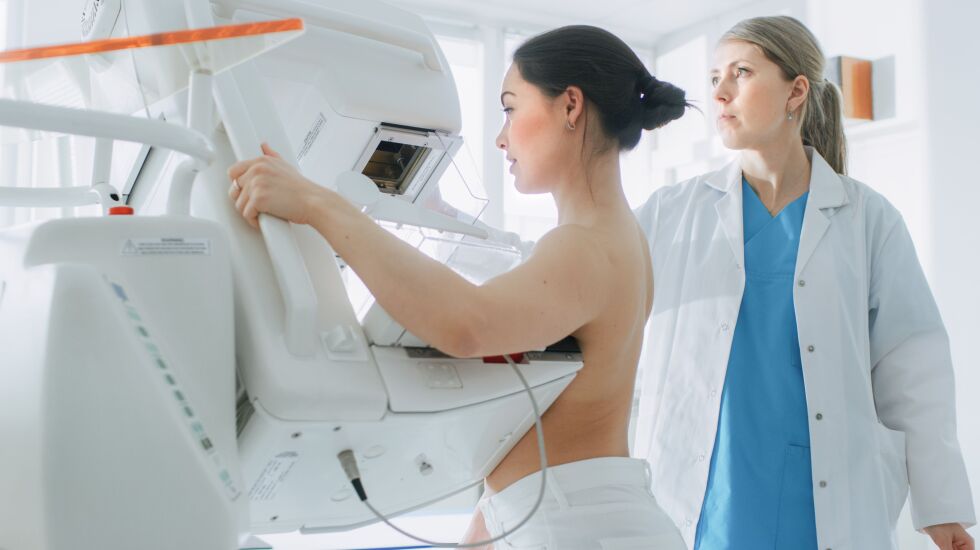
Katie Couric recently went public about having been diagnosed with breast cancer earlier this year.
The TV personality revealed that when she had a mammogram in June, her breast radiologist performed a biopsy. The next day, the doctor confirmed it was cancer.
Couric underwent surgery, followed by several sessions of radiation. In an essay, she urged others to get mammograms and to see whether they might need additional screenings for breast cancer.
Here are some key facts to know about mammograms:
What is a mammogram?
It’s an X-ray of the breasts. Typically, they’re used to look for signs of breast cancer. They also can be used to examine changes such as a new lump, pain in the breast, nipple thickening or discharge.
When should you get a mammogram?
The U.S. Preventive Services Task Force says women 50 to 74 years old who are at average risk for breast cancer should get a mammogram every two years. Those between 40 and 49 should talk to their health provider about when to start getting a mammogram and how often.
The American Cancer Society recommends that women 40 to 44 years old should have the choice to begin annual breast-cancer screenings with mammograms and that women 45 to 54 should get mammograms every year.
Some women with genetic mutations might start screenings as early as 25. Women with a family history of breast cancer also can screen starting “10 years earlier than the first affected relative in the family,” according to the Cleveland Clinic.
Do mammograms hurt?
Some find them uncomfortable or even painful. Though a mammogram isn’t an invasive procedure, the breasts do get compressed between “two firm surfaces to spread out the breast tissue,” according to the Mayo Clinic.
Despite any discomfort, regular mammograms “are the best tests doctors have to find breast cancer early, sometimes up to three years before it can be felt,” according to the federal Centers for Disease Control and Prevention.
Since breasts can be more tender then, experts recommend trying to avoid having one the week before or during a period.
What if you’ve had breast implants?
Those who have breast implants should still get regular mammograms unless they had both breasts removed in a bilateral mastectomy, according to the American Cancer Society. The screening is also a little different. The breast is typically pulled out over the implant, and the technologist will take more images, known as implant displacement views.
Do mammograms show cancer?
A radiologist examines a mammogram to look for “high density regions or areas of unusual configuration that look different from normal tissue,” according to the National Institute of Biomedical Imaging and Bioengineering. Those areas could be cancerous tumors, though they also could be benign tumors or cysts.
How long do mammograms take?
Mammograms typically take less than 30 minutes.
If one shows any suspicious areas “that are not definitive for cancer, the radiologist may order additional mammogram views, with or without additional magnification or compression, or they may order a biopsy,” according to the National Institute of Biomedical Imaging and Bioengineering.
Do dense breasts affect mammograms?
Having dense breast tissue increases your risk of breast cancer and sometimes require additional screening.
“You have to ask your radiologists, or your radiologist ideally should be telling you, ‘You have dense breasts,’ and then you often need secondary screening,” Couric said. “My radiologist compared it to trying to find snowballs in a field of snow.”
As she heals from treatment, Couric says she wanted to spread a message about the importance of getting an annual mammogram while also giving a warning that many women with “dense breasts” like herself, may want to get additional screening.
Couric said the key to her doctor finding she had a tumor that needed a biopsy was a breast ultrasound — a procedure she’s trying to raise awareness about.
“All these breast cancers diagnoses would happen much earlier if, in fact, women with dense breasts had breasts ultrasounds,” Couric said.
For more information about breast cancer awareness, mammograms, treatment and support groups, go online to nationalbreastcancer.org.
Read more at usatoday.com







